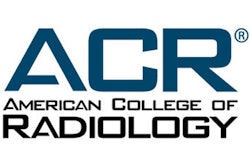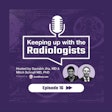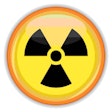
Radiologists with lifetime American Board of Radiology (ABR) certificates are less likely to participate in the board's Maintenance of Certification (MOC) program, while radiologists with time-limited certificates are more inclined, according to a study published online September 19 in the American Journal of Roentgenology.
Lower rates of participation in the MOC program by radiologists who aren't required to do so may reflect dissatisfaction or negative perceptions, wrote a team led by Dr. Andrew Rosenkrantz of NYU Langone Medical Center in New York City.
"Based on public criticisms of MOC, low participation rates among diagnostic radiologists not mandated to participate ... may relate to physician perceptions of the relevance and utility of MOC, the burden of time used to study for and take the examinations, and the high cost, including examination fees and travel," the group wrote. "Low participation rates suggest that radiologists who do not participate may believe that the benefit of participating does not exceed the costs."
In 2002, the ABR replaced traditional oral board lifetime certification with the MOC program, issuing time-limited diagnostic radiology certificates and mandating MOC participation for the certificates to remain valid, Rosenkrantz and colleagues wrote. Radiologists who had received lifetime certificates before 2002 were encouraged to participate in the program but were not required.
Across medical specialties, physicians have expressed concern about MOC programs run by specialties that are members of the American Board of Medical Specialties, pressing for further research about the programs' acceptance, adoption, and value -- and radiology is no different, the group noted.
So Rosenkrantz and colleagues sought to investigate the level of diagnostic radiologists' participation in the ABR MOC program via a study that included 20,354 practicing U.S. radiologists identified from the U.S. Centers for Medicare and Medicaid Services Physician and Other Supplier Public Use File who were also diagnostic radiology ABR diplomates.
The group calculated MOC participation rates across various physician characteristics among those for whom participation in the program was mandated (because of time-limited ABR certificates) and compared it with those for whom MOC was not required (because of lifetime certificates).
The team found that, of the total number of radiologists in the study, 56.4% participated in MOC, with a 99.6% rate among those for whom participation was mandatory and a 13.9% rate among those for whom it was not.
The group also found the following:
- Rates of nonrequired participation were higher for academic (28%) than for nonacademic radiologists (11.3%).
- Rates of nonrequired participation were higher for subspecialists (17%) than for generalists (11.5%).
- Rates of nonrequired participation were higher for those in larger practice groups.
Further discussion about the MOC program's efficacy is needed, Rosenkrantz noted in a statement released by the American Roentgen Ray Society.
"Many opinions have been expressed regarding MOC in radiology," he stated. "Through this work, we hope to bring objective findings to help inform [future] discussions."




















